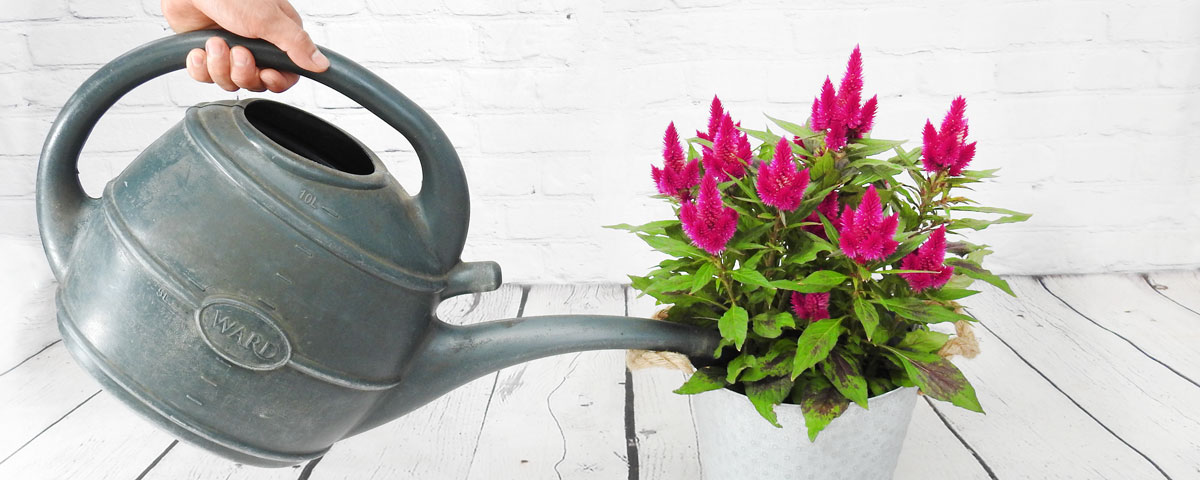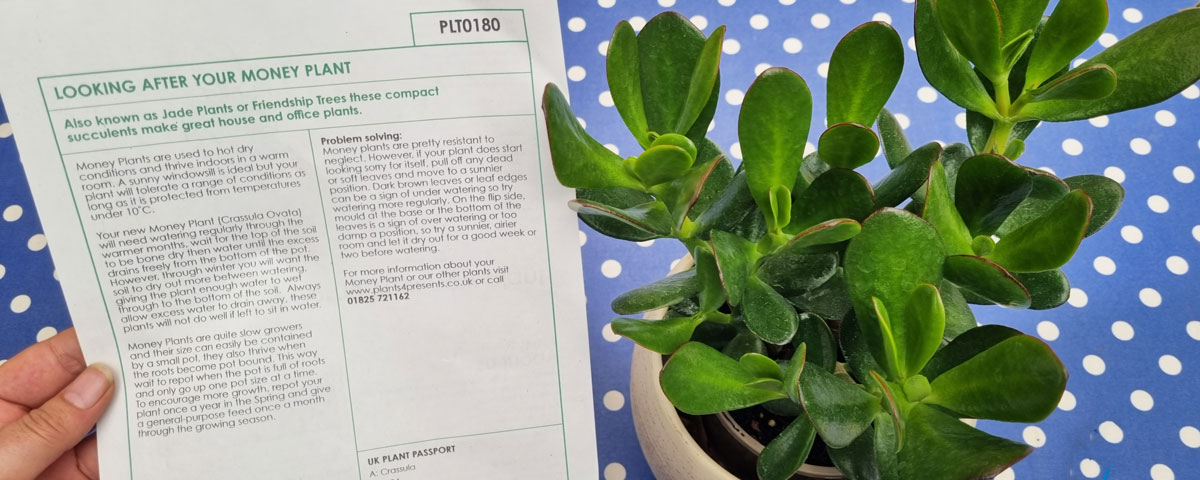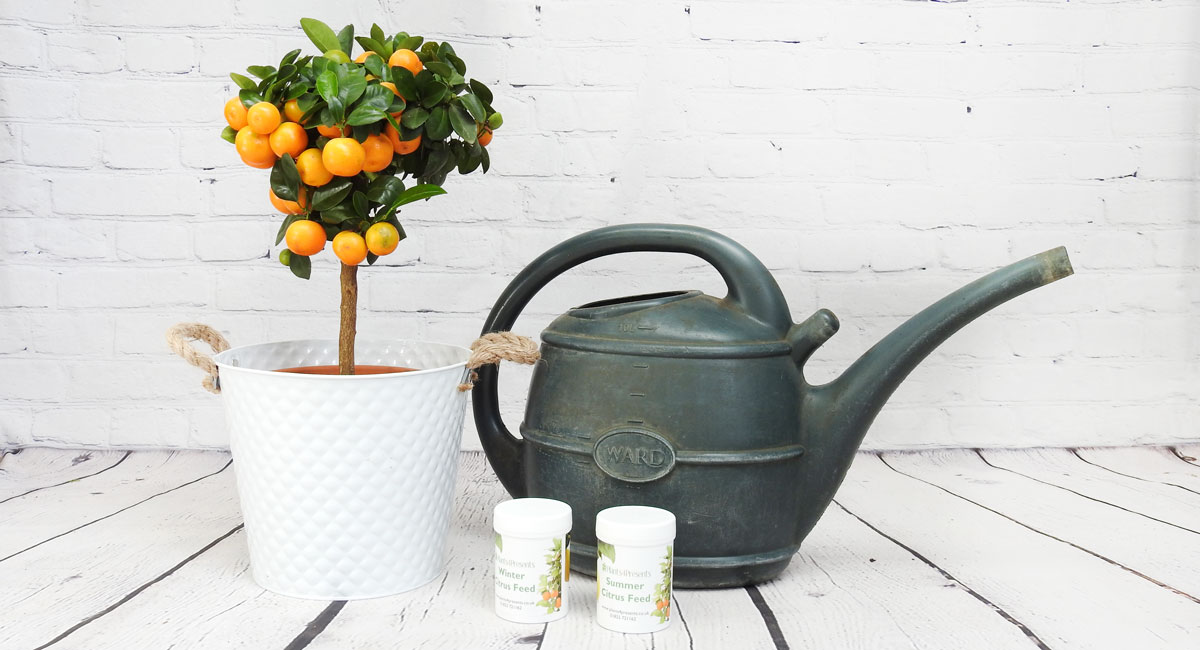How to Correctly Care for Your Plants
As a plant owner, you’ll know that keeping your plants happy and thriving can sometimes feel like a daunting task. But don’t worry, we’re here to reveal the delicate art of plant care and share our tried and tested tips to help you nurture your plants with confidence. Whether you’re an experienced plant parent or just starting out on your journey, this guide will equip you with the knowledge you need to keep your plants thriving.

Understand Your Plant’s Needs
Each plant is unique and has specific care requirements. When you get a new plant, you should begin familiarising yourself with the species and it’s needs. We know that this can take time and the information online can be confusing, so for each and every one of our plant gifts we include a full set of printed care instructions helping you to understand the care your plant will need. We’ll include top tips and details of the plants native habitat to help you gain insight into the conditions that best support its growth. This knowledge will be your compass throughout your plant care journey but of course you're always welcome to reach out to our knowledgeable team at the nursery with any further queries.

How to care for your plants
Soil
Although it can be tempting to pop your plant in any old soil, the right soil for your type of plant can actually improve the plant’s health by:
By selecting the appropriate soil type, you can create the optimal conditions for your plant to thrive and reach its full potential.
Light Requirements
Proper lighting is crucial for your plant’s overall health. Some plants thrive in bright, direct sunlight, while others prefer indirect or low-light conditions. Observe your plant’s response to light and adjust accordingly. It’s also good to rotate your plant periodically to ensure even growth and prevent it from leaning towards the light source.
Watering
Watering your plant can be a balancing act. Overwatering can lead to root rot, while underwatering can cause wilting and stress. As a general rule, you can check the moisture level of the soil before watering by inserting your finger about an inch deep. If it feels dry, then it’s time to water. However, avoid leaving your plants standing in water as it can suffocate the roots. With a lot of plants it’s also important to allow the soil to dry slightly between waterings to prevent dehydration.
Humidity
Many plants need a higher humidity level than what our homes naturally provide. But fear not, you can enhance humidity by misting your plants with water, placing them near a tray of water or humidifier, or grouping them together to create a microclimate. Doing this can help recreate a more favourable environment – especially for tropical plants!
Feeding
Just like humans, plants need nutrients in order to thrive. Plant fertilisers are essentially plant ‘food’ that provides essential nutrients that may be lacking in the soil. Make sure you choose a fertiliser that is suitable for the type of plant you own and follow the instructions. It’s important not to over-fertilise as this can harm your plant! A balanced feeding schedule will keep your plants well-nourished throughout the growing season and again our handy care guides will give you more details on the best feed routines for your specific plant.

Pruning and Grooming
Pruning involves the removal of certain parts of the plant that may affect the health or development of the plant. Some plants and particularly fruiting plants like grapevines really benefit from pruning at the right time of year, whilst others are much more self sufficient and we’ll always give you advice on this in our care instructions. For most plants, regular pruning can help your plant maintain a healthy shape and encourage new growth. Remove any dead or yellowing leaves as soon as they appear to divert energy back to the healthy parts of the plant. Grooming your plants not only improves their appearance, but it also encourages better air circulation which reduces the risk of pests and diseases!
Monitoring Your Plants Health
Be attentive to your plant’s well-being by checking in for signs of distress. This could be wilting, yellowing leaves, or stickiness and pests. By detecting these signs early, you have time to take action! Keep an eye out for any changes in light, temperature, or watering conditions that might affect your plant’s health. Prevention is better than cure!
How to Pick The Perfect Plant For You
When choosing a plant, you should consider factors such as maintenance requirements, light conditions, and personal preference. Determine if you prefer low or high-maintenance plants based on your schedule and the time and effort you can dedicate to their care. It’s also good to think about the lighting conditions in your space to ensure it’s suitable for the plants you have chosen to thrive. Finally consider the size now and the eventual size, shape and appearance of the plant that you are considering and if that would work in the space you have. All these elements can help you choose the best plant for you and of course if you need any help, our knowledgeable plant team are always on hand to help.
Why Is Taking Care of Plants Important
Taking care of plants has many benefits. First of all, plants improve air quality by releasing oxygen and filtering pollutants which promotes a healthier environment. They also have a positive impact on our well-being by reducing stress levels and improving mental health. Other than the health benefits, plants simply add aesthetic value, making your space more beautiful!
How Plants4Presents Can Help
As plant enthusiasts ourselves, we can provide expert guidance on choosing the right plant and on ongoing plant care. We offer convenient delivery services, personalised gift options, and a wide selection of plants suitable for everyone and every situation. Whether you’re looking for house plants or garden plants, low maintenance or statement plants, we have you covered.
Frequently Asked Questions
How often should I prune my plants?
The frequency of pruning depends on the type of plant and its growth habits. In general, it's best to prune plants during their active growth period, which is usually in spring or early summer. Regular pruning helps maintain the shape, promotes healthy growth, and removes dead or diseased foliage. However, it's important to read the care instructions we send with the plants which will highlight any specific pruning requirements and ensure you prune at the right time and in the correct manner!
How much water is too much water?
Providing the right amount of water is crucial for plant health. However, overwatering can lead to root rot and other issues. The exact amount of water required varies depending on factors such as plant species, pot size, and environmental conditions. To see if you're overwatering, check the moisture level of the soil. If the soil remains consistently wet or soggy, it's a sign of excess water. Additionally, yellowing leaves, wilting, or a foul smell may indicate overwatering. With most plants it’s a good idea to let the soil dry out partially between watering to prevent waterlogged conditions.
How often should I water my plants?
The watering frequency depends on various factors such as the plant species, weather, potting mix, pot size, humidity, temperature and amount of daylight the plant is receiving. Note that most plants will need a lot more water in the growing season and when it is warmer and sunnier than in the winter months. Because of all these variables it is very difficult to say x number of times a week for any plant however our handy care guides will give you more information on how often to water for each specific plant and over time you will learn what works best for your plant in your conditions.
What should I do if my plant is wilting?
Wilting can be a sign of underwatering, overwatering, root problems, or other issues. The first thing to check is, is the soil dry? If so, give your plant a good drink and see if it starts to recover over the next day or two. If you are unsure if it’s thirsty you can always gently ease the rootball out of the plastic plant pot to assess the root conditions. Perhaps there are dry patches underneath but it’s damp on top and the cause is uneven watering or perhaps it’s soggy all the way through and actually your plant needs a chance to dry out. If these simply tips don’t set your plant on the road to recovery then please do give us a call at the nursery and our plant care team will only be too happy to help.

